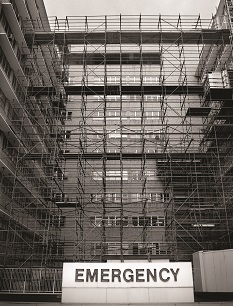Technical / NHS explores new ways to manage estate as capital gets tighter
British Medical Association analysis in
February suggested the service would need an eye-watering £10bn of capital funding to deliver projects in sustainability and transformation plan footprint areas. March’s Budget provided at least some response, announcing £325m of capital to allow first plans to go ahead.
Capital is certainly in short supply, compounded by capital to revenue transfers to help support the challenging revenue position. So the HFMA’s capital forum in March was timely and unsurprisingly well attended.

From a national perspective, the key focus is to contain capital expenditure within the capital departmental expenditure limit (CDEL).
In 2015/16, the underspend against the CDEL was £58m, which is, in itself, a large number but is only 1.57% of the budgeted CDEL. In 2016/17, it is expected that the outturn position will be as close, if not closer. This is a relatively new phenomenon, prior to 2013/14, the underspend against CDEL was comfortably above 10% of budget.
Providers account for some three quarters of capital expenditure recorded against CDEL. The Department traditionally managed the position against CDEL by setting capital resource limits (CRLs) for NHS trusts. But foundation trusts do not have CRLs so are not controlled this way.
However, the Department is the main source of funding for capital expenditure (where NHS bodies cannot fund their own capital projects from internally generated resources) and can manage access to funding to achieve the national position.
The Department is also reliant on provider bodies’ forecasts when managing the national position against the CDEL. Inaccurate forecasts make this job harder and have also been blamed for the traditional underspend on capital.
There are good reasons that capital programmes slip, and forecasts are inaccurate – business cases take time to prepare, procurement is time consuming and funding needs to be put in place. Even once capital projects are underway, they can hit delays. However, the quarter 3 performance report by NHS Improvement indicated that initial forecasts for the sector were that 45% of the forecast capital expenditure for the year would be incurred in the last three months of the year. Although this was reduced following a review – it still seems high and suggests the finance community has room for improvement in this area.
Even allowing for slippage, the outturn against CDEL this year will be close and the amount of capital expenditure planned for the next few years outstrips CDEL considerably. NHS bodies therefore need to look outside of the traditional routes to manage their estate.
The book value of any surplus property, plant and equipment that is sold counts as negative expenditure against CDEL, which means that a greater amount of capital expenditure can be incurred without breaching the CDEL.
A theme of the capital forum was working together to achieve a common objective. The HFMA and CIPFA are aiming to identify local authorities that have used their borrowing power to support NHS bodies. Local authorities’ prudential code effectively allows them to set their own borrowing limit. They might invest in schemes where they can make a commercial return, managing car parks for example. Or they could support a scheme that fulfils their duties around affordable housing or economic regeneration.
NHS bodies are also exploring managed service contracts with private sector suppliers. These need to be real service contracts (ie they don’t meet the IFRIC 4 definition of a lease) or be operating leases (as defined by accounting standard IAS 17) to ensure that they can be treated as a revenue cost.
Another consideration is whether these contracts, or straightforward finance leases, could be entered into by a group of NHS organisations, giving them all access to the equipment they need but reducing the overall cost to the NHS.Related content
The Institute’s annual costing conference provides the NHS with the latest developments and guidance in NHS costing.
The value masterclass shares examples of organisations and systems that have pursued a value-driven approach and the results they have achieved.